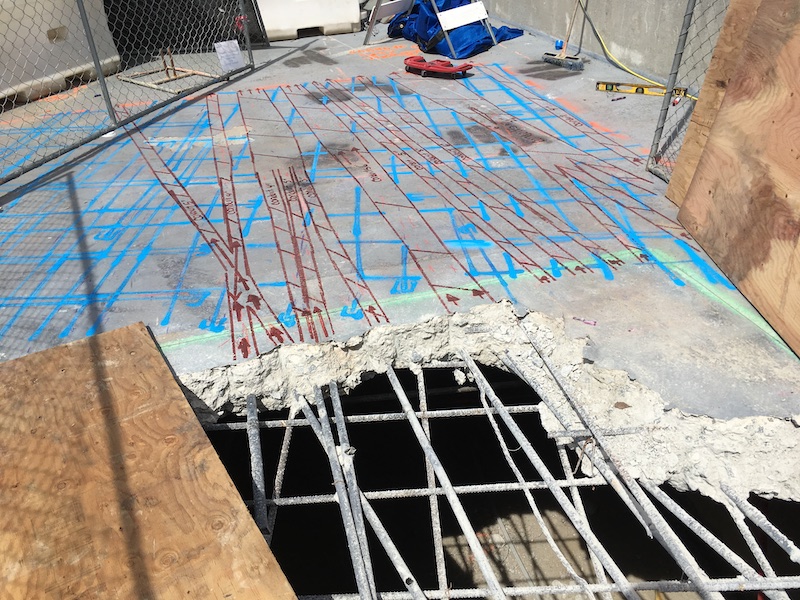RainierGPR Service Areas: Comprehensive Insurance Coverage for Concrete Scanning
RainierGPR Service Areas: Comprehensive Insurance Coverage for Concrete Scanning
Blog Article
Enhancing Task Planning and Execution Via Advanced Concrete Scanning Strategies
In the world of project preparation and implementation, accuracy and foresight are crucial aspects that can make the difference between success and setbacks. Advanced concrete scanning methods have emerged as an advanced device established to elevate the requirements of task administration within the building and construction industry.
Advantages of Advanced Concrete Scanning Strategies

Improved Accuracy in Task Analyses
Enhancing job analyses through advanced concrete scanning strategies substantially improves the precision and integrity of building evaluations. By employing advanced scanning innovations such as ground-penetrating radar (GPR) and 3D imaging, job teams can currently obtain detailed insights into the problem of concrete structures, recognizing potential imperfections or weaknesses that may not be visible to the naked eye. This improved level of accuracy in task assessments enables building and construction professionals to make more enlightened choices relating to fixing and upkeep approaches, causing improved total job results.
In addition, the enhanced precision in task evaluations attained via innovative concrete scanning methods assists in minimizing the risk of unpredicted concerns throughout the building phase. By proactively finding surprise abnormalities within concrete frameworks, such as rebar deterioration or gaps, task groups can resolve these issues at an early stage, preventing expensive hold-ups and rework later on in the task lifecycle. Ultimately, the enhanced precision in job assessments assisted in by innovative concrete scanning methods adds to better efficiency, cost-effectiveness, and quality in building projects.
Early Identification of Structural Difficulties
Very early detection of architectural challenges plays a crucial duty in guaranteeing the honesty and security of concrete frameworks throughout the building and construction procedure. Determining potential concerns at a beginning permits for timely intervention, preventing expensive rework, timetable delays, and safety and security hazards. Advanced concrete scanning techniques, such as ground-penetrating radar (GPR) and 3D imaging, make it possible for task groups to reveal covert issues, gaps, support design inconsistencies, and various other anomalies that can jeopardize the framework's security.
By applying these methods during the preparation and execution phases, building experts can proactively address structural obstacles prior to they intensify right into major troubles. For instance, spotting insufficient concrete cover over support bars early can protect against rust and architectural weakening over time - RainierGPR Service Areas. In addition, determining variants in concrete thickness or thickness can assist maximize material use and make sure uniform toughness residential properties across the framework

Ultimately, very early recognition of architectural challenges with advanced concrete scanning not only enhances the general quality and sturdiness of the building and construction but likewise adds to a safer built environment for owners and customers.
Boosted Security Actions in Construction
The execution of durable safety and security methods is necessary in the building sector to mitigate threats and guard the health of stakeholders and workers. Construction sites are naturally hazardous settings, with possible threats ranging from falls and devices breakdowns to structural failures. To improve precaution, construction firms hop over to these guys are significantly adopting technical innovations such as wearable devices that check employees' important signs and discover possible health and wellness issues in real-time. Moreover, using drones for site security permits normal security examinations without putting personnel in harm's way. Safety training programs have find more likewise developed to include virtual fact simulations that provide hands-on experience in managing emergency situation scenarios. Additionally, the assimilation of artificial intelligence in security monitoring systems allows proactive recognition of prospective threats, enabling prompt interventions. By prioritizing security via the unification of sophisticated modern technologies and comprehensive training programs, building and construction jobs can considerably decrease accidents and produce a protected workplace for all involved - RainierGPR Service Areas.
Streamlining Task Monitoring Processes
To enhance operational efficiency and make certain task success in the construction market, a focus on streamlining project management processes is important. By executing reliable task monitoring procedures, building and construction jobs can minimize delays, reduce costs, and enhance overall performance. One vital facet of simplifying job management is making use of advanced technologies such as Building Details Modeling (BIM) software, which makes it possible for real-time collaboration, clash discovery, and precise job scheduling. Furthermore, the fostering of cloud-based project monitoring systems allows for smooth communication amongst team members, immediate accessibility to task data, and the capacity to track progress in real-time.

Conclusion
Finally, the use of advanced concrete scanning techniques uses many advantages for project preparation and execution. These techniques offer better precision in task assessments, very early recognition of structural challenges, boosted precaution in construction, and structured project administration procedures. Integrating these techniques right into task operations can inevitably bring about extra effective and effective end results in building and construction projects.
Ultimately, the improved precision in task evaluations facilitated by innovative concrete scanning methods adds to better efficiency, cost-effectiveness, and high quality in construction projects. RainierGPR Service Areas.
To optimize operational efficiency and guarantee job success in the building and construction sector, an emphasis on streamlining task management processes is crucial. By carrying out effective task management procedures, construction tasks can reduce hold-ups, reduce costs, and improve total performance. By simplifying task administration procedures through innovation integration, clear communication, and data-driven approaches, building jobs can attain higher efficiency, cost-effectiveness, and successful end results.
These strategies supply enhanced precision in task assessments, very early identification of architectural challenges, enhanced safety measures in important link construction, and streamlined project management processes.
Report this page